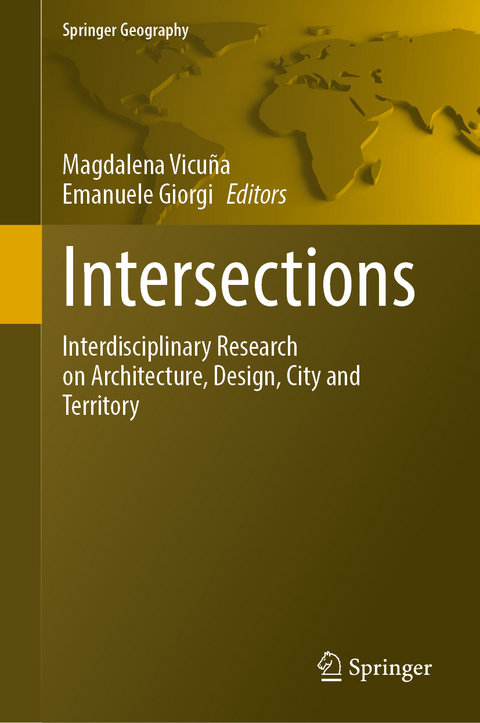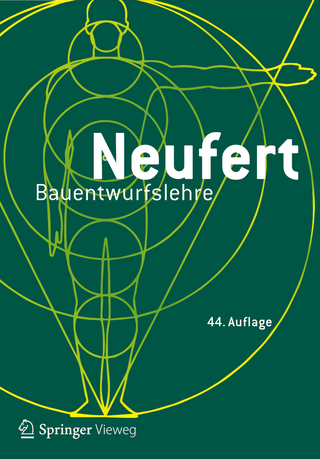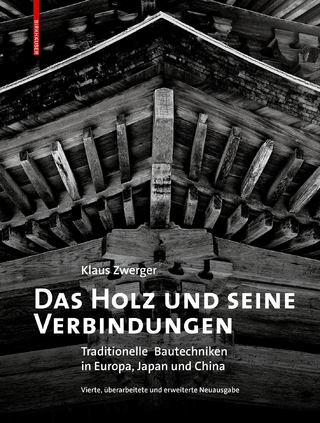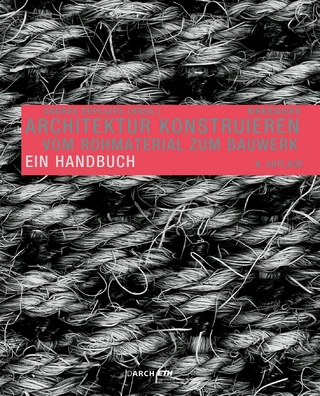
Intersections
Springer International Publishing (Verlag)
978-3-031-76401-1 (ISBN)
- Noch nicht erschienen - erscheint am 23.02.2025
- Versandkostenfrei innerhalb Deutschlands
- Auch auf Rechnung
- Verfügbarkeit in der Filiale vor Ort prüfen
- Artikel merken
This book presents a critical vision of the role of architecture and design in constantly changing cities, territories and societies from a Latin American perspective. Topics include, pandemic and post-pandemic; public culture and aesthetics; right to housing, city and services, gender approach and ethics of care; heritage and cultures, critical methodology; sustainable landscapes; perceptions and emotions; processes and technologies; territories and intermediate cities.
The IV Intersections Congress was organized by high-level universities in Latin American: faculties of architecture, design and urban studies that came together during an historical moment of great changes. The congress was an invitation to weave conversations that address the tensions emerging in local, regional and global debates, with the goal of understanding how architecture, design, city and territory are a relevant intersection for these tensions. This translation was done with the help of artificial intelligence. A subsequent human revision was done primarily in terms of content.
1. Research in architecture, design, city and territory. Between scales, agencies and territories in Latin America.- Section I: HERITAGE TURNS, CULTURES ANDMICRO-HISTORIES IN THE DISCIPLINARY DISCUSSION AND PROJECT PRACTICES.- 2. Landscape and artifice. The natural context as a discursive strategy of contemporary Chilean architecture.- 3.Memory as a territory in dispute: tension between urban heritage and neoliberal urban development from the memory site Venda Sexy.- 4. Folk art and university extension: some categories in tension during the 1960s in Chile.- 5. Antarctic architecture a contemporary heritage: Analysis of the architecture and life at the Eduardo Frei Montalva Antarctic Air Base, 1969-2022.- Section II: SUSTAINABLE LANDSCAPES, RESILIENCE AND REGENERATIVE CULTURES: EMERGING APPROACHES TO THE CLIMATE AND ECOLOGICAL CRISIS.- 6. Regenerative understanding of place for urban-rural contexts in Mexico. Methodological proposal.- 7. The environmental observatory for mining projects: a system for the analysis of public environmental management information.- 8. Huasco wetland observatory. Promoting the environmental and cultural values of urban coastal wetlands in the Atacama Desert.- 9. Evaluation criteria for resilient civic design for response capacity in residential communities affected by the San Ramón fault, in Santiago de Chile.- 10. Adaptability of architectural forms for irregular buildings in the flood-prone coastal zone of Laguna Verde, Valparaíso.- Section III: RIGHT TO HOUSING, TO THE CITY AND SERVICES: ALTERNATIVES FOR TERRITORIAL INCLUSION AND SOCIAL INTEGRATION.- 11. Nutritious cities: an exploration of food environments in five Mexican cities.- 12. PICTOS: A service focused on cognitive accessibility for navigation and evaluation of services in Chile.- 13.Walking in deprived neighborhoods: understanding the role of the built environment.- 14. Separate and unequal childhoods: residential segregation and neighborhood inequalities of children in Chile.- Section IV: GENDER FOCUS AND ETHICS OF CARE: NEW DISCIPLINARY AND PROJECTUAL PERSPECTIVES IN DESIGN, ARCHITECTURE AND URBANISM.- 15. Public health as public space: feminist design for spaces of care, encounter and collaboration between State and Citizenship around wellbeing.- 16. Sensing the City. Co-designing urban space with deaf children and their caregivers.- 17. Openly caring: integration of sustainability and inclusion in urban education.- 18. Urban proximity: a methodological approach from a gender perspective.- 19. House on kings road: the house of Pauline Gibling Schindler.- Section V: PROCESSES, TECHNOLOGIES AND NEW MATERIALS: CREATION OF POSSIBLE FUTURES, SPECULATIVE DESIGN, NEW AESTHETIC UNIVERSES, NEW ECOSYSTEMIC RELATIONS.- 20. Metaversal Space: Methodology for the definition of space in the Metaverse.- 21. New landscape and emerging dynamics of interaction between users and the urban space produced by digital delivery platforms.- 22. Interdisciplinary implementation of the national rural development policy in local and regional strategic planning instruments in Chile.- 23. New biobased materials: Exploratory analysis of the actors developing new biobased materials in Chile.- 24.Multidisciplinary approach for the development of materials from the byproduct of the opening of the cashew nut in Vichada.- Section VI: TERRITORIES, INTERMEDIATE CITIES AND PEOPLE IN MOVEMENT.- 25. Characterization for the management of urban parks and green areas of mid-sized cities.- 26. The scales of vulnerability. Mobility and accessibility of the vulnerable active population in Santiago de Chile.- 27.The construction of a segregated metropolis: urban segregation and natural preexistences in the Metropolitan Area of Concepción.- 28.Community knowledge in action: participatory design for the transformation of the cashew value chain in the Vichada region, Colombia.- Section VII: CRITICAL METHODOLOGY, PROJECT AND DIDACTICS OF RESEARCH IN ARCHITECTURE, DESIGN, CITY AND TERRITORY.- 29. Narratives as a research technique to understand urban nature production.- 30. Photoethnography as a research methodology for manifestations in public space in times of revolt.- 31. Playability, democracy and design: experience of designing popular educational materials about the proposal of Constitution in Chile.- 32. Urban events as strategies for creation and re-creation of the city: the Pan American Games of Santiago 2023 and Barranquilla 2027.- Section VIII: PERCEPTIONS, EMOTIONS AND IMAGINARIES IN ARCHITECTURE, DESIGN, CITY AND TERRITORY.- 33.Narratives and public discourses of the right to the City. A review from the press to the bicentennial bridge conflict. Concepción, Chile 2010-2020.- 34. The projected city. Urban analysis from historical cartography. Temuco 1888 -1919.- 35. Affective frameworks, or the construction of a Place in the housing complexes in Providencia carried out by Luciano Kulczewski.- 36.Stereotypes and gender roles in Unidad Independencia through Nacho López's photographic archive.- 37.BRAT'YA. The architecture of Dostoyevsky.- Section IX: CULTURES AND AESTHETICS OF THE PUBLIC: DISCUSSIONS AND ALTERNATIVE PARADIGMS IN LATIN AMERICA.- 38.The public and the community in tension in Self-Built urban spaces: the case of the "Operation Site" settlements in Santiago de Chile.- 39.Beginnings of standardization in educational architecture. Forms of expansion of the republican state in La Araucanía.- Section X: PANDEMIC AND POST-PANDEMIC: CHALLENGES FOR ARCHITECTURE, DESIGN, THE CITY AND THE TERRITORY.- 40.(Non) proximate Cities, lessons from the pandemic.- 41.Exploring Architecture as an exit device in times of crisis.- 42.Urban microbiome: architecture and microbiology for a healthy built environment.
| Erscheint lt. Verlag | 23.2.2025 |
|---|---|
| Reihe/Serie | Springer Geography |
| Zusatzinfo | XXXVII, 908 p. 273 illus., 238 illus. in color. |
| Verlagsort | Cham |
| Sprache | englisch |
| Maße | 155 x 235 mm |
| Themenwelt | Technik ► Architektur |
| Schlagworte | Architecture and Urban Studies • Critical theory • Design • interdisciplinary research • Latin America universities |
| ISBN-10 | 3-031-76401-3 / 3031764013 |
| ISBN-13 | 978-3-031-76401-1 / 9783031764011 |
| Zustand | Neuware |
| Informationen gemäß Produktsicherheitsverordnung (GPSR) | |
| Haben Sie eine Frage zum Produkt? |
aus dem Bereich


